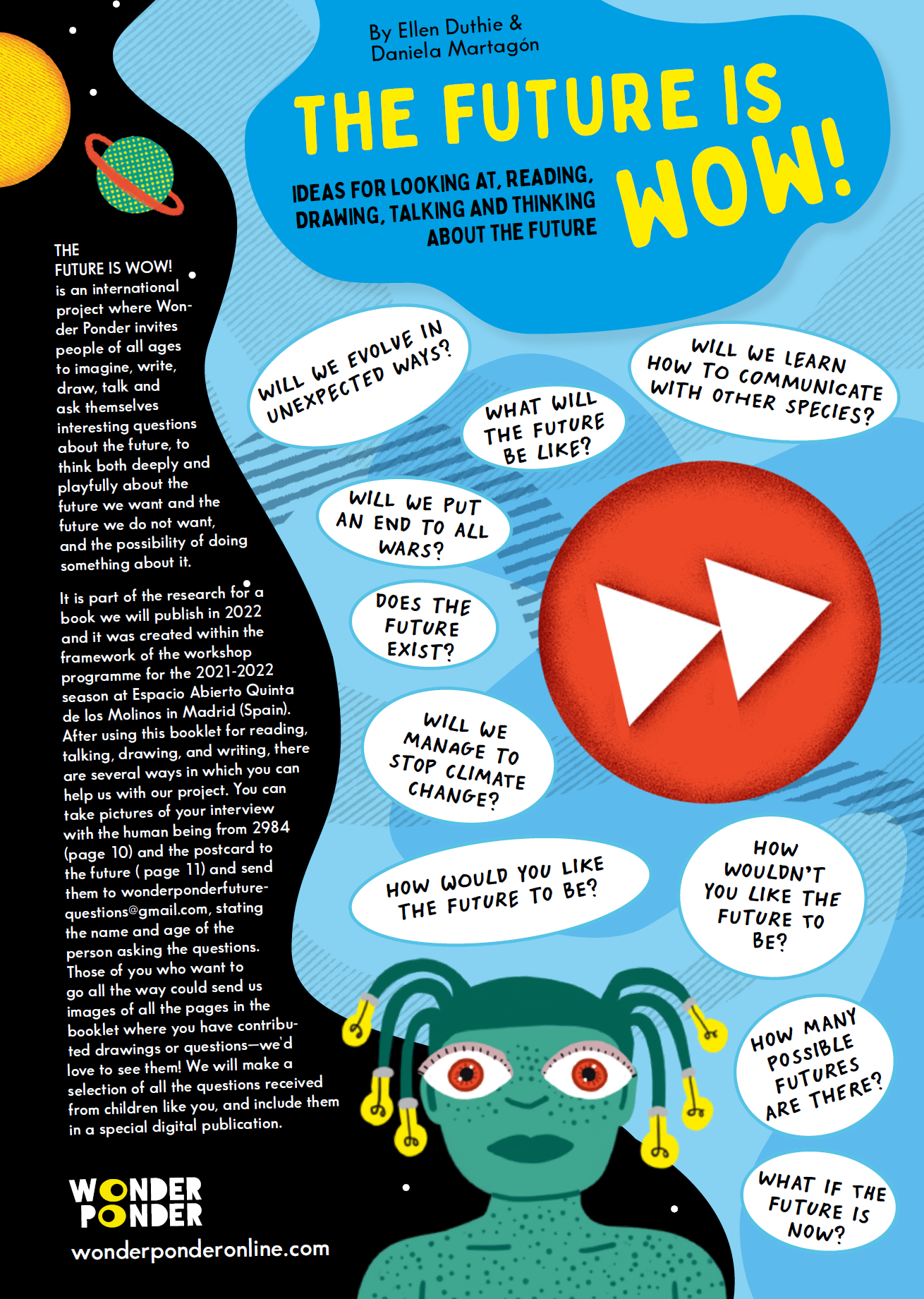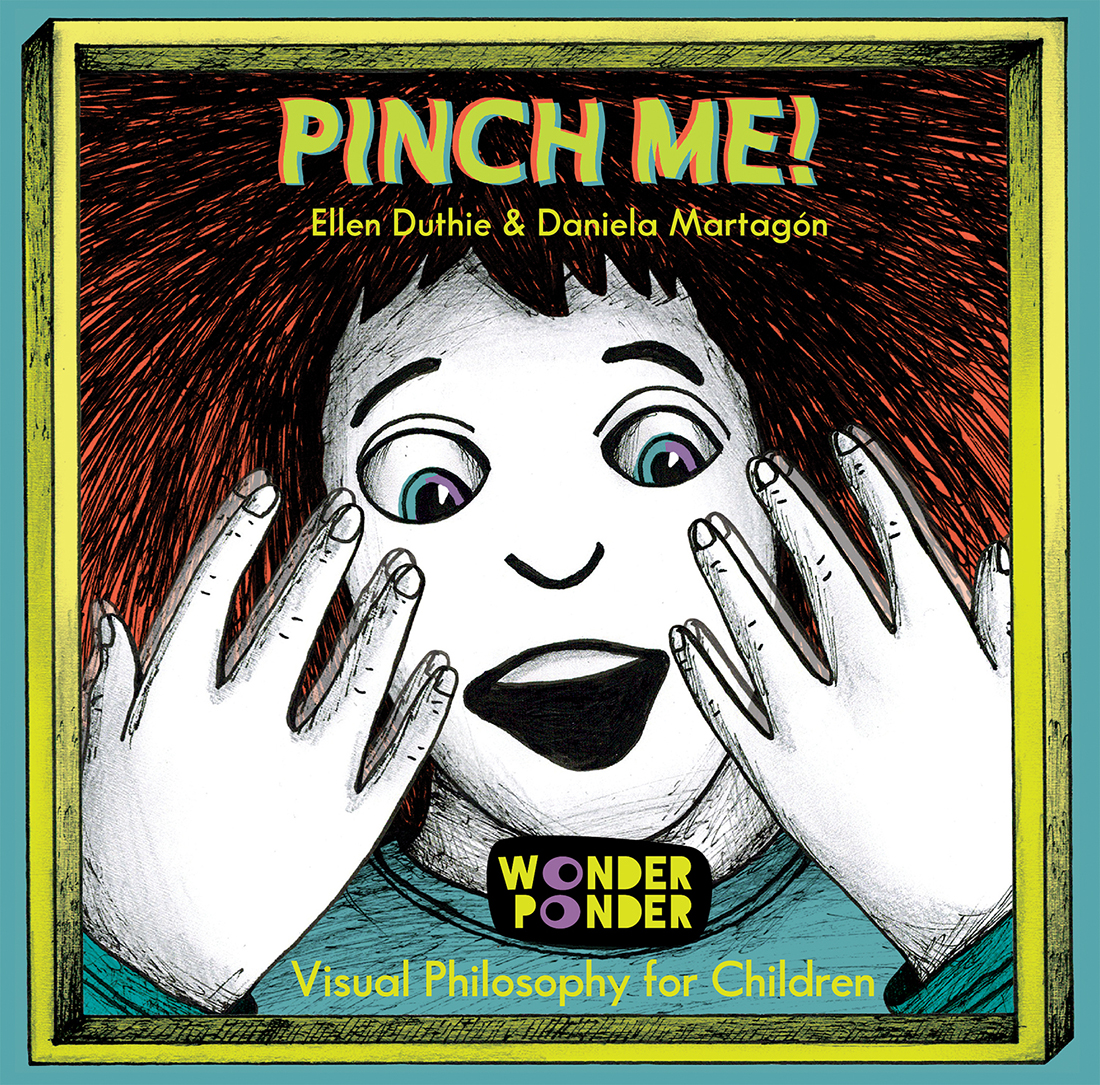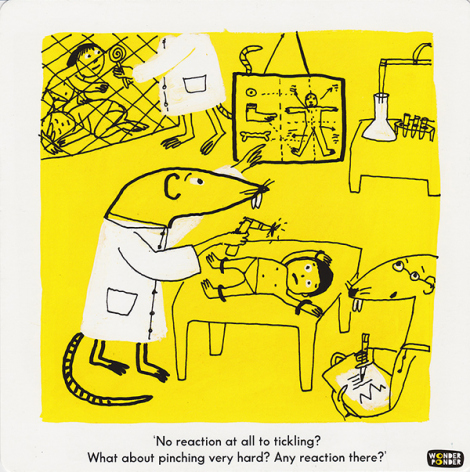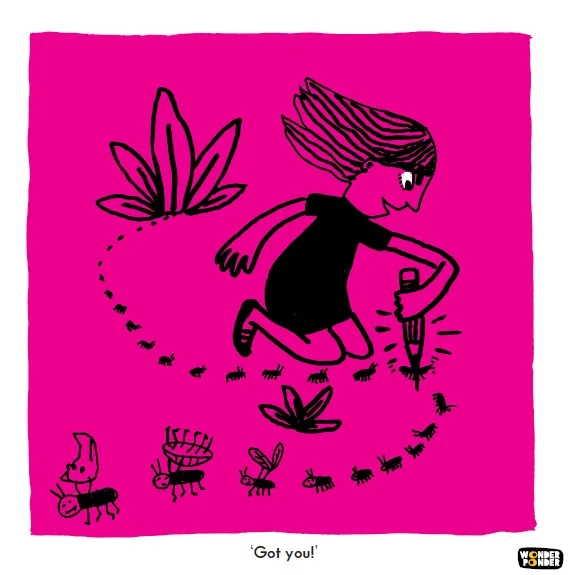Mother: What is the girl doing?
Boy: She's killing an ant with a pointy pencil.
Mother: Do you think she's being cruel?
Boy: Yes, because she's doing it in a really nasty way. Like this: "bang! bang! bang!".
Mother: Why do you think the way she is killing the ant is nasty?
Boy: Because look at her face. She looks like a baddy.
Mother: Have you ever killed an ant?
Boy: Yes, but not in that really nasty way.
Mother: How did you kill it?
Boy: Well, with my finger, or with my foot, by accident. It wasn't on purpose.
Mother: Have you never killed one on purpose?
Boy: Yes, once I killed an ant on purpose with my finger, but it was also a bit by accident. I put my finger on it to see what happened and I killed it. I didn't think it was that easy to kill an ant. It was soft, I thought ants were harder.
Mother: And was that cruel of you, do you think?
Boy: I think it was a bit cruel, yes.
Mother: Do you remember last week we found a little ant colony in our kitchen terrace? And do you remember we "cleaned it"? We killed lots of ants. Did you think that was cruel?
Boy: Well, a bit, because they died, but I don't think it's like the girl in the picture. You killed them to protect our food. But this girl is really nasty. Because she's killing the ant in a sort of laughing way, it looks like she's having fun.
Mother: And do you think it's more cruel to kill for fun than to kill out of need -or because we think we need to-?
Boy: Yes, because killing for fun is no good at all. What's that for? It's just to have fun with something that isn't really much fun at all. But killing out of need, for example to protect food or if a bug bites you, to stop it biting you more, that's different.
Mother: What if, for example, we lived in the countryside and a dog came and tried to steal our food. Would we be justified to kill it?
Boy: A dog? No! If a dog came, we could call its owner. And we could tell the owner off for not keeping his dog under control, like when they poo on the road and don't clean it up or when they let them run loose in the park and frighten children.
Mother: What if the dog didn't have an owner? What if it was sort of wild?
Boy: (brief pause) Oh! I know! We could call a dog shelter!
Mother: Why do you think it's different, killing a dog and killing an ant?
Boy: The dog is very big. Killing it would be too cruel.
Mother: So is it a question of size, then? The bigger the animal, the more cruel it is to kill it?
Boy: Yes, killing big animals is very cruel. .
Mother: So do you think it's worse to kill an elephant than to kill a poodle?
Boy: Mmmmm. No. No, both things are cruel.
Mother: But you feel it's more cruel to kill a poodle than to kill an ant.
Boy: Yes.
Mother: And why do you think it is more cruel?
Boy: Well, a dog... is more like a person.
Mother: How is it more like a person?
Boy: The eyes. If you look a dog in the eyes, it's like it's talking to you. That doesn't happen with an ant.
Mother: Do you think dogs are more intelligent than ants?
Boy: Yes, much more intelligent. That's why.
Mother: So it's more about intelligence than about size?
Boy: Well, I think it's both. Because even if an elephant had the intelligence of a mosquito, it would also be cruel to kill it.
Mother: Do you think ants suffer?
Boy: I don't know.
Mother: Do you think the ant is frightened?
Boy: I don't know either, but I think so.
Mother: Why do you think so?
Boy: Because if you put a finger close to an ant, it goes off in another direction running. It knows there is a danger.
Mother: Do you think the girl deserves a punishment?
Boy: Yes.
Mother: What punishment do you think would be appropriate?
Boy: That all the ants went to her and started biting her.
Mother: And if it's in a school, should the teacher think of a punishment?
Boy: Yes.
Mother: And what would the punishment you would give the girl if you were the teacher?
Boy: I would tell the ants to bite the girl.
Mother: Would you think that was fair?
Boy: Yes, she would deserve that. "If you kill my friend, I'll bite you. You nasty girl!"
Mother: If you saw a girl or boy doing this, what would you do?
Boy: I'd say: "Hey! Hey! Hey! Pencils are for drawing! Not for killing!"
Mother: Have you enjoyed looking at this together and talking with me about it?
Boy: Yes, but now it's my turn. Let me ask you...
Mother: Go ahead.
Boy: What about you? Do you think the girl is being cruel? Why?
[and the conversation continued...]
(c) Wonder Ponder (An imprint of Traje de lobo S.L.).



































